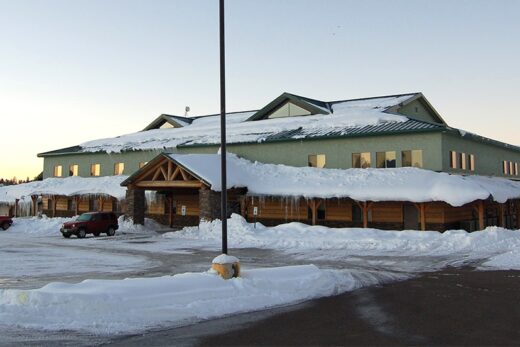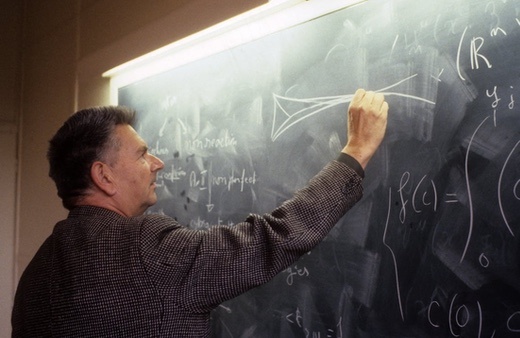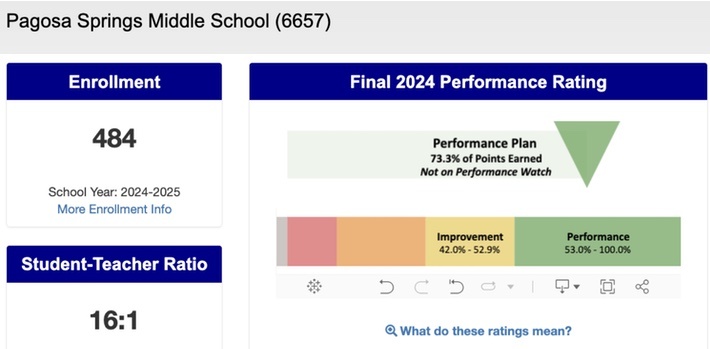Illustration: An education scientist?
We’re going to talk about math scores in modern American schools. But I’m illustrating the article, above, with a painting by Cima da Conegliano, c. 1515. If you do an online search for “God and Mathematics” you will likely come across claims by certain prominent mathematicians that God built the universe on the basis of mathematical formulae.
Along those same lines, I think we can make a compelling argument that scientists and mathematicians tend to see themselves as the holy priests of our modern world. This belief greatly impacts how our American education system ranks children, teachers, and school districts as “excellent” or “less than excellent”.
Here in Archuleta County, our district-authorized charter school serves about 110 children in grades K-8, five days a week. Pagosa Peak Open School, which often refers to itself as “PPOS”, opened its doors in 2017 based on a charter application that promised an innovative approach to public education.
Many people in Pagosa do not know that charter schools in Colorado are tax-supported, tuition-free public schools, open to all families. But because charter schools often operate in smaller, ‘second-hand’ buildings, their enrollment is typically limited by physical space.
PPOS, for example, operates in a building originally designed as an office building.

PPOS is currently accepting enrollment applications for the 2025-2026 school year, and will likely need to hold a ‘lottery’ for some of the grade levels, because the school’s enrollment policy limits lower grades to 18 students and upper grades to 21 students.
The lottery will be held in early March.
Is PPOS an “excellent” school? That all depends on how you define “excellent”, and who is making the determination.
I argued in Part Two of this editorial series that the word “excellent” traditionally refers to something that “excels”. Something that surpasses the ordinary; something superior to the run-of-the-mill.
But it’s become commonplace — especially, perhaps, in the education industry — to use the word “excellent” to mean: “reasonably okay”.
I also mentioned in Part Two a recent move by the Trump administration to cut $900 million in funding for the Institute of Education Sciences. In a February 11 AP News article, the CEO of the Knowledge Alliance, Rachel Dinkes, was quoted:
“Cutting out at the knees the one independent agency that helps improve student outcomes is ridiculous,” Dinkes said…
As an observer of, and participant in, America’s education system from a very young age, and as a regular critic of that same system, I seriously doubt that the Institute of Education Sciences has ever done anything at all to improve student outcomes in Pagosa Springs, despite nearly $1 billion in annual funding. It’s much more likely, I suspect, that the Institute of Education Science has been making things worse.
Education is not a science. Education is an art.
Science works great if you’re building a rocket, or a computer. But children are not rockets, nor are they computers.
Unfortunately, “education scientists” often treat them as it they were.
Recently, I’ve been reading a book by noted biologist Rupert Sheldrake, entitled Science Set Free, published in 2012. It was originally published in Great Britain as The Science Delusion.
Both versions of the book’s title imply that ‘science’ as we know it has some serious philosophical issues. One of those issues was illustrated by this quotation from French mathematician René Thom, about the limits of mathematics when describing most anything involving biology… or really, any complex system.
The excellent beginning made by quantum mechanics with the hydrogen atom peters out slowly in the sands of approximations… as we move towards more complex situations… This decline in the efficiency of mathematical algorithms accelerates when we go into chemistry…
In biology, if we make exceptions of the theory of population and of formal genetics, the use of mathematics is confined to modelling a few local situations… of slight theoretical interest and limited practical value… the relatively rapid degeneration of the possible uses of mathematics when one moves from physics to biology is certainly known among specialists, but there is a reluctance to reveal it to the public at large…

Mathematics is remarkably effective if we are calculating the trajectory of a single rocket headed to the moon.
But when we’re looking at, for example, the complex processes taking place within a growing child, mathematics can provide only rough approximations and estimations… “of limited practical value.”
As Thom suggests here, mathematics has become something of a sacred cow among scientists, many of whom believe (or pretend to believe) that everything of importance can, or will be, finally quantified in terms of numbers and equations. Mathematics has become the holy altar at which scientists worship, at which economists worship, at which business managers worship… and increasingly, at which “education experts” worship.
The Colorado Department of Education recently published rankings for our local public schools, based on a top score of 100.
Pagosa Springs High School: 61,8
Pagosa Springs Middle School: 73.3
Pagosa Springs Elementary School: 49.7
Pagosa Peak Open School: 50.6
Which is the “excellent” school? If we believed that a school can be classified based on a mathematical formula, we might be tempted to choose Pagosa Springs Middle School as our “excellent” school.

But, on what is that score based? Student performances on a single test in English Language Arts, and a single test in Mathematics, conducted in April.
One of the most complex processes in human experience — the education of a growing, evolving child — is rated based on two annual tests designed by scientists with absolutely no knowledge of that particular child.
The Gods of Education Science, thinking themselves wise, look down from heaven… and fail to understand how the world actually works.
Read Part Four, tomorrow…

